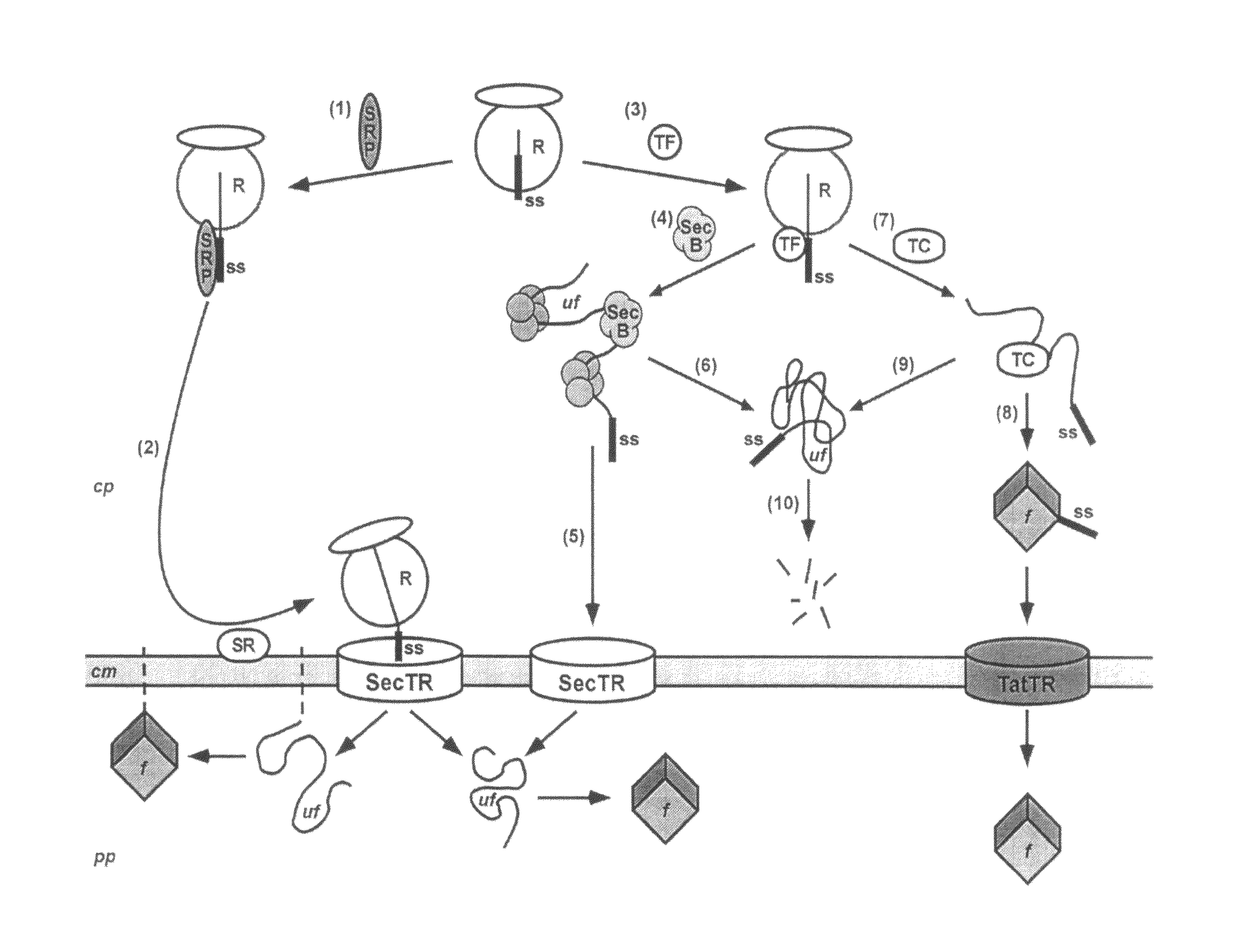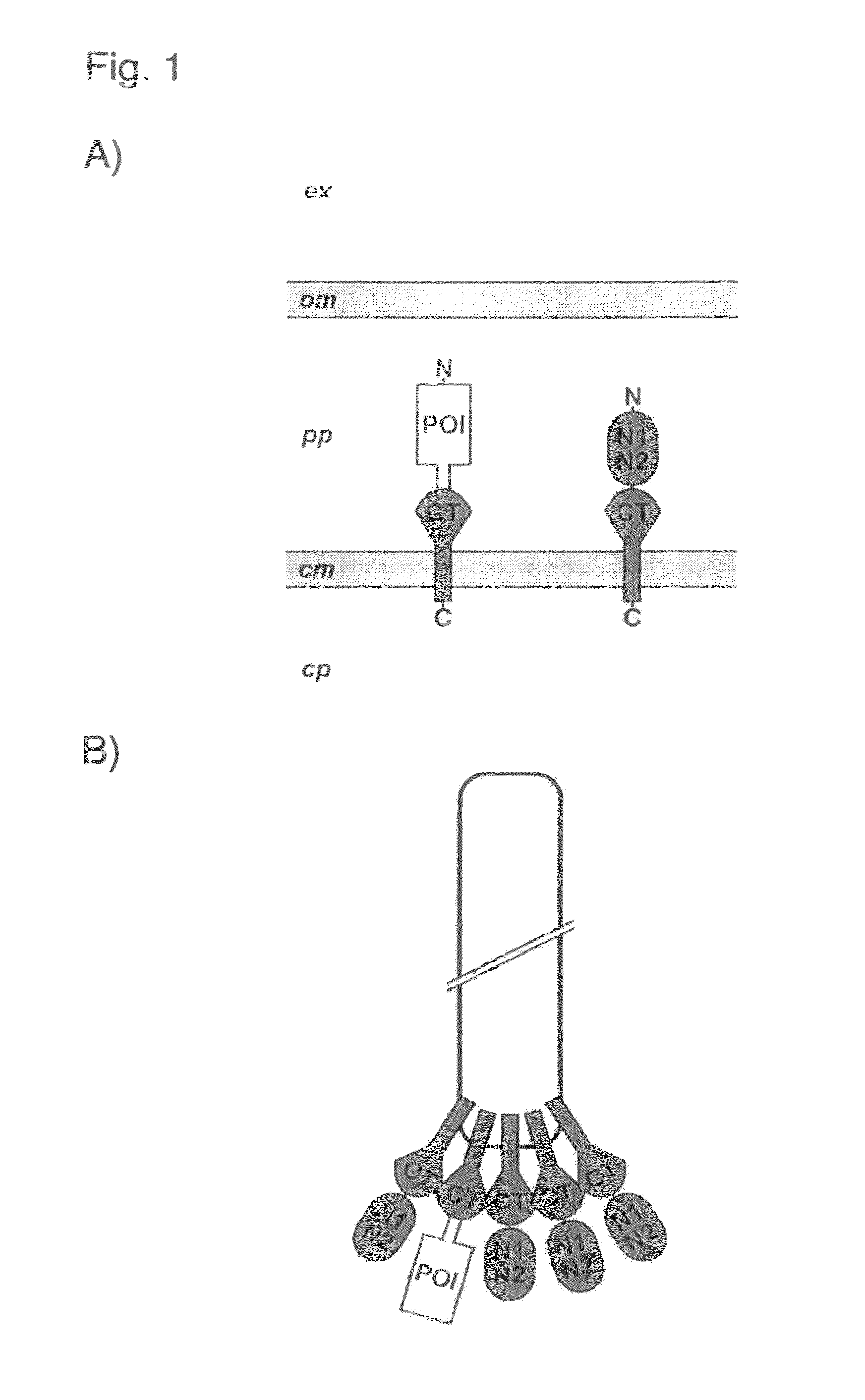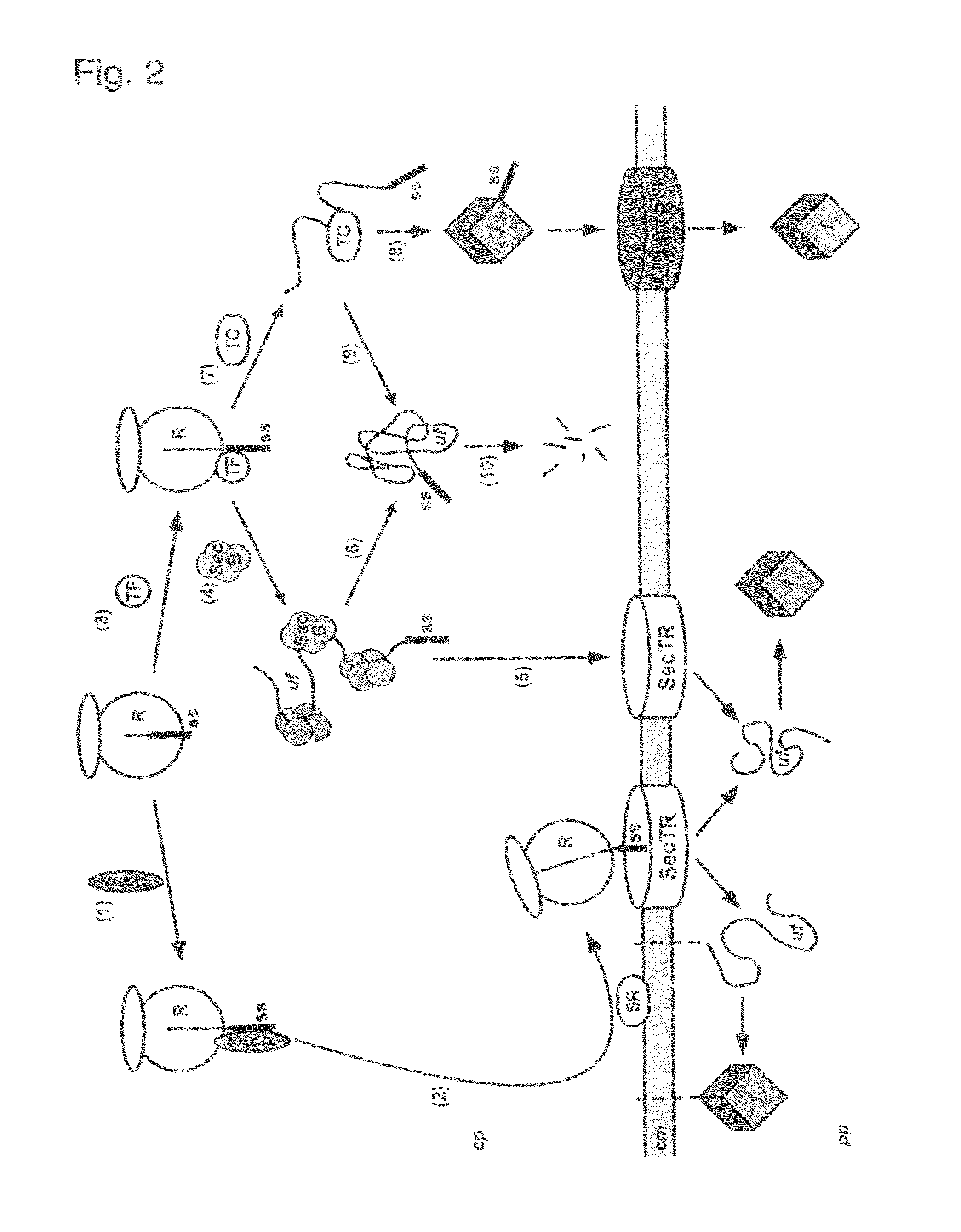Phage display using cotranslational translocation of fusion polypeptides
a polypeptide and cotranslational translocation technology, applied in the field of new phage display methods, can solve the problems of polypeptide recalcitrant display, inability to fully explore the cotranslational translocation pathway, and inability to fully explain the contribution of the translocation mechanism to the success of phage display
- Summary
- Abstract
- Description
- Claims
- Application Information
AI Technical Summary
Benefits of technology
Problems solved by technology
Method used
Image
Examples
example
Materials
[0090]Chemicals were purchased from Fluka (Switzerland). Oligonucleotides were from Microsynth (Switzerland). Vent DNA polymerase, restriction enzymes and buffers were from New England Biolabs (USA) or Fermentas (Lithuania). Helper phage VCS M13 was from Stratagene (USA). All cloning and phage amplification was performed in E. coli XL1-Blue from Stratagene (USA).
[0091]Unless stated otherwise, all molecular biology methods were performed according to described protocols (Ausubel, F. M., Brent, R., Kingston, R. E., Moore, D. D., Sedman, J. G., Smith, J. A. and Stuhl, K. eds., Current Protocols in Molecular Biology, New York: John Wiley and Sons, 1999). Brief protocols are given below.
Phage Display Related Methods
[0092]Unless stated otherwise, all phage display related methods were performed according to described protocols (Clackson, T. and. Lowman, H. B. eds., Phage Display A Practical Approach, New York: Oxford University Press, 2004; Barbas III, C. F., Bur...
PUM
| Property | Measurement | Unit |
|---|---|---|
| pH | aaaaa | aaaaa |
| volume | aaaaa | aaaaa |
| temperature | aaaaa | aaaaa |
Abstract
Description
Claims
Application Information
 Login to View More
Login to View More - R&D
- Intellectual Property
- Life Sciences
- Materials
- Tech Scout
- Unparalleled Data Quality
- Higher Quality Content
- 60% Fewer Hallucinations
Browse by: Latest US Patents, China's latest patents, Technical Efficacy Thesaurus, Application Domain, Technology Topic, Popular Technical Reports.
© 2025 PatSnap. All rights reserved.Legal|Privacy policy|Modern Slavery Act Transparency Statement|Sitemap|About US| Contact US: help@patsnap.com



